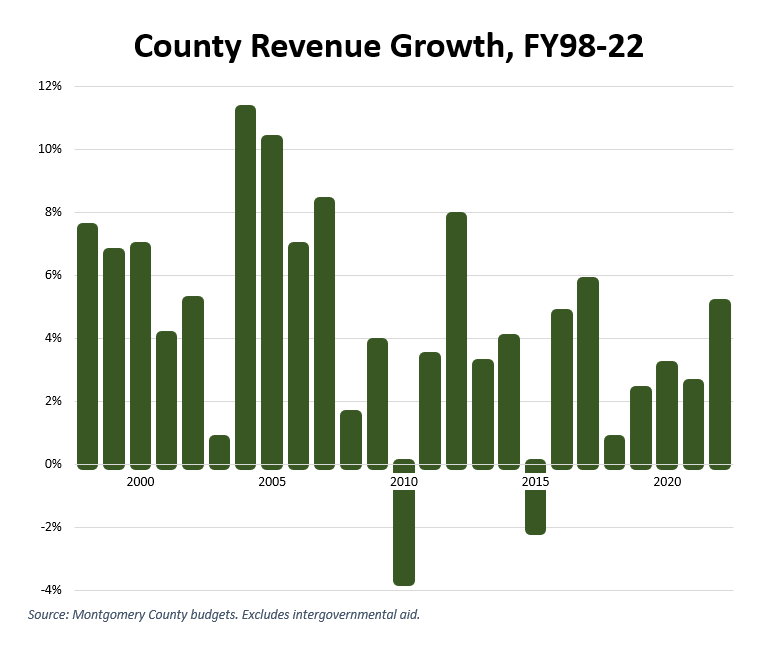By Adam Pagnucco.
This series has discussed a lot of economic data but let’s change the subject to you, the reader. Who are you?
Are you an advocate for funding some part of the government – the schools, parks, employee compensation, capital projects or something else? You need money for your priorities. That comes from the economy.
Are you a business owner? You need customers – especially customers with money. That comes from the economy.
Are you a taxpayer? You need a robust commercial sector that can share the tax burden with you so you and your neighbors won’t have to pay for all of it. That comes from the economy.
Are you an elected official? You need revenues to pay for everything your constituents want. That comes from the economy.
Everything the government does ultimately flows from the economy. And here’s the thing, folks – our economy is not healthy enough to pay our bills. That’s not just because of COVID. This series has explored seven important economic measures which have been underperforming for years – in some cases, for decades. I could have made this a 10-part or even a 20-part series. But when you have growth problems in population, real gross domestic product, real per capita gross domestic product, personal income, wage and salary employment, average wages and proprietors income, it’s hard to pick any other combination of measures that can offset all of that.
Do we have the weakest economy in the region? Probably not. We go back and forth on some measures with Prince George’s County and Alexandria is in trouble. But regardless of the performance of other localities, we are the ones who mostly have to pay our bills. (Thank God for the feds!)
What about the political dimensions of this? Republicans have no juice here so they would find something to complain about even if we were doing well. A weak economy is a bigger problem for Democrats since they want to have a strong and active government, but they can’t have one without revenues. And revenues come from – you guessed it, the economy. Without a strong economy, progressive priorities cannot be sustainably funded over the long term.
To prove that point, consider the chart below, which shows actual county government revenue growth excluding intergovernmental aid since 1998. From FY98 through FY09, revenue grew by an average of 6.1% per year. From FY10 through FY22, that growth dropped to 2.8% per year.

Let’s also note that there were many tax hikes during this period – five on property, two on energy, one on income and one on recordation. There were also too many fee increases to count. Despite all of that, we still have slow revenue growth. That’s what happens to your government budget when you have a stagnant economy.
It took us a long time to get into this situation and it could take a while to get out. While we have many assets, our competitors are formidable. It won’t be easy to improve, but until we figure it out – IF we do – let’s do one simple thing.
Let’s not make it any worse.
